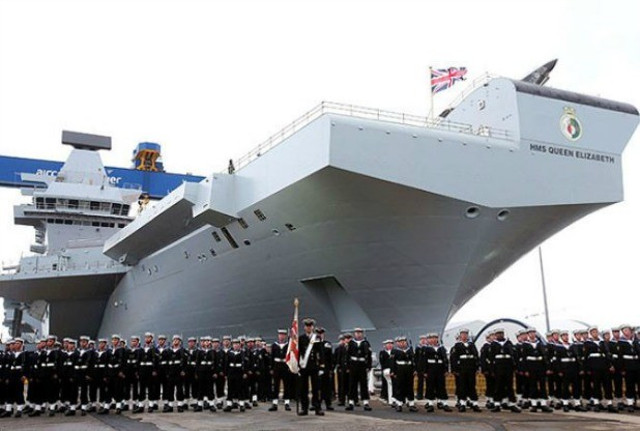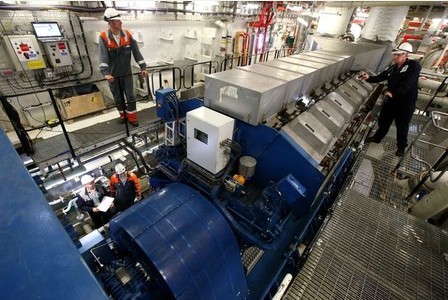The propulsion systems of the UK largest ever built warship, HMS Queen Elizabeth, has produced power for the first time with its on-board diesel generators.
Starting one of four generators on HMS Queen Elizabeth was a major step in the programme to put the 65,000-tonne UK warship into service.
UK’s Royal Navy aircraft carrier is being assembled and fitted out at Rosyth Dockyard in Fife. The vessel is expected to be ready for handing over to the Navy by the end of 2017.

Image: Royal Navy
The warship will use these four diesel generators mainly,while at sea, but if it will be necessary to reach a higher speed, two gas turbines will be fired up as well.
Providing over 39mw generated power, the four diesel generators are capable to supply nearly 78,000 homes.
HMS Queen Elizabeth, along with the under-construction HMS Prince of Wales are known as Queen Elizabeth Class aircraft carriers. The vessels are being built by the Aircraft Carrier Alliance (ACA), a partnership of BAE Systems, Babcock, Thales and the Ministry of Defence.
Both vessels will be able to sail up to 500 miles per day to different parts in the world, providing to the armed forces a four-acre operating base each.
The HMS Queen Elizabeth generator was fired up by Philip Dunne, the UK Defence Procurement Minister, during its official visit on board the vessel.
He said: “Powering up the diesel generator today marks an important milestone on the journey to bring these highly versatile ships into service with our armed forces. They will be the largest, most capable and effective surface warships ever constructed in the UK. The build programme is supporting thousands of jobs across the country, with over 4,000 of those jobs at Rosyth and the Clyde.”

Image: Royal Navy
The power and propulsion director for the Aircraft Carrier Alliance, Jim Bennett, also commented:
“There is something particularly special about the starting of the first diesel engine on any vessel. The gentle vibration, reassuring hum and first smoke appearing from the funnel creates a heartbeat and breathes life into a new ship.''
All ship’s diesel engines are directly coupled to the general electric generator. Each coupled power unit weighs around 200 tonnes, which is approximately the weight of 200 cars.
The representative of the MoD on the Aircraft Carrier Alliance, Rear Admiral Henry Parker, said:
“To get our own power on board the ship actually working, get the electricity into the veins of the ship, so we can then start commissioning all the other systems is a really big day and it’s the culmination of a lot of work from a lot of people over many months.”
UK’s Royal Navy aircraft carrier was formally named by the Queen in a ceremony in July last year.
The construction works on HMS Prince of Wales are almost half completed, with the forward island installed one month ago.
The project for Queen Elizabeth Class aircraft carriers is estimated to cost in total over £6 billion and those behind the project believe that QE Class will be the centrepiece of Britain’s naval capability.